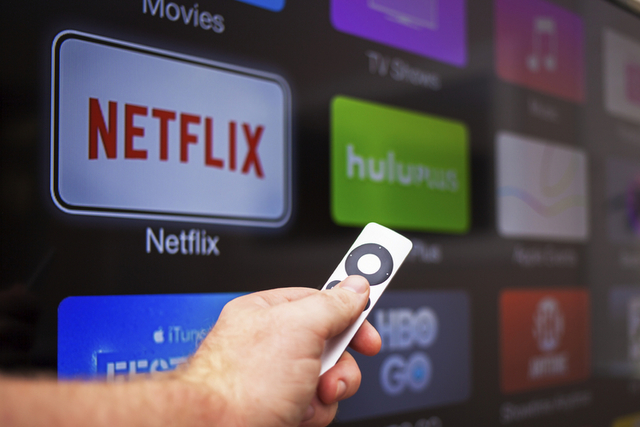Is it the end of live TV?
![]() Is this the end of live TV?
Is this the end of live TV?
According to a recent survey from Deloitte, Americans are more prone to view movies, TV shows, sports and other media through video-streaming services such as Netflix and Hulu, as opposed to watching live TV programming.
The survey, which polled more than 2,000 U.S. consumers, found that 42 percent of American households prefer to stream their entertainment. Nearly 56 percent of people surveyed said they mainly stream movies, while 53 percent said they stream TV episodes each month. Only 45 percent of respondents said they’d rather watch live TV.
The switch to streaming
The switch to streaming isn’t a new trend, but rather one that’s been developing over the past few years. According to a 2014 Nielsen’s Total Audience Report, 2.6 million American households chose not to subscribe to cable and opted to go “broadband only.”
Gerald Belson, vice chariman of Deloitte and U.S. Media and Entertainment sector leader, believes that the shift to streaming services is linked to a consumer’s desire for personalized entertainment.
“The ability to consume media at your own pace is significantly impacting how U.S. consumers value their content devices and services,” he said.
Binge-watching
And, speaking of watching content at your own pace, if you’ve ever found yourself binge-watching (watching more than two episodes in one sitting), you’re definitely not alone.
Sixty-eight percent of consumers admitted to binge-watching, and 31 percent of those say they binge-watch at least once per week — a trend that has many experts worried.
“There’s convincing evidence in adults that the more television people watch, the more likely they are to gain weight or become overweight or obese,” said Lilian Cheung of the Harvard School of Public Health. “And there’s emerging evidence that too much TV watching also increases the risk of weight-related chronic diseases, such as type 2 diabetes.”
Multiple screens
Almost 100 percent of respondents to the Deloitte survey said they multitask while watching TV, meaning they’ll spend time on their cell phone or tablet sending emails or scrolling through social media while simultaneously watching TV.
While dividing attention across multiple devices can be an easy distraction for many viewers, other research from Nielsen indicates that there can be a positive correlation between Twitter volume and TV ratings, as many viewers enjoy live tweeting about a show and interacting with other viewers.
Others, however, believe that multitasking is an indication that TV isn’t as attractive as it once was.“The rise in multitasking while watching TV suggests that scheduled programming, also know as Linear TV, may be losing its appeal,” said Francesco Venturini of Accenture’s Media & Entertainment industry group.






























